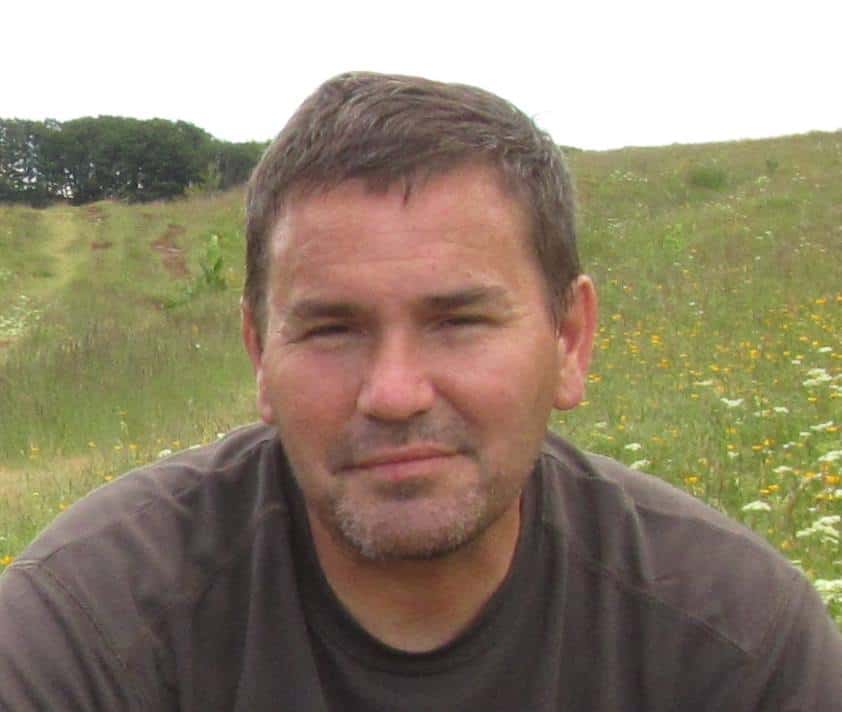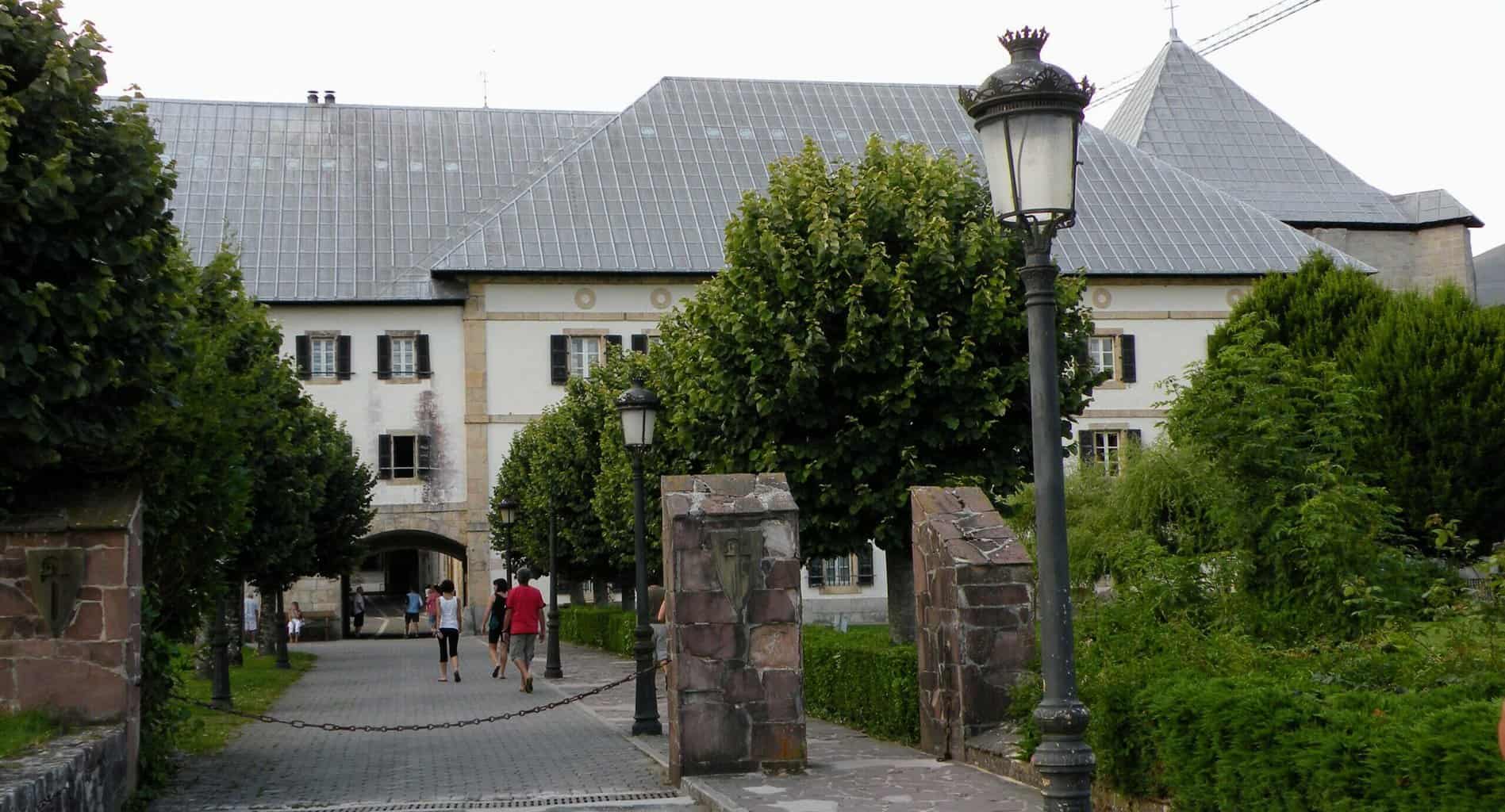If you decide to embark on the Camino Frances pilgrimage in its whole length and beauty, the magical Roncesvalles would be your first stop or your point of departure. Therefore, it’s good to equip yourself with some basic information about the village and its importance in the area and to the Camino de Santiago.
Roncesvalles is a small settlement located in the beautiful Navarra forest nestled in the even more stunning Pyrenees. As if that wasn’t enough, it’s a place of wrapped in the web of history and legends.
The Importance of Roncesvalles
Throughout history, Roncesvalles represented a gateway to the Iberian Peninsula from neighboring France, where the Romans built a road connecting Bordeaux with Astorga. This route was used by the Celts, Goths, and the Moors centuries after its creation. (And likely before the Romans)
The most compelling legend tied to Roncesvalles is that of the epic defeat of the great French army of Charlemagne in 778. After lifting the siege in Saraqustra (today’s Zaragoza), the army set out to regress through the same passage they had entered Spain a few months earlier.
However, as they were passing through Roncesvalles, the army was attacked and massacred by the surrounding tribes, and Roland, the first knight of Charlemagne, fell with his men. The battle of Roncesvalles became immortalized in the 11th century “The Song of Roland”.
What to See in Roncesvalles?
Roncesvalles is a tiny settlement, yet it has sites worth seeing. Besides the lovely fir and oak forests and meadows surrounding it, the monastery complex offers several fascinating structures, including 13th-century Colegiata de Santa María. The Collegiate is an excellent example of Navarran Gothic architecture and features the famous Virgin Mary of Roncesvalles, a wooden carving in a silver coating. According to legend, she miraculously appeared after a sighting of a stag, and on the antlers shone two stars.
The chapel of St. Augustine guards the tomb of Navarrese King Sancho VII ‘el Fuerte’ in its center. King Sancho VII was reportedly tall, 2.25m, and fought against the Muslims in the famous Battle of Las Navas de Tolosa in 1212, which is also depicted on the vitrages on the windows of the chapel.
The oldest building in the compound is the Romanesque chapel of Sancti Spiritus (also known as Charlemagne’s Silo). It stands over a crypt with a vaulted ceiling, and legend has it this is where Roland pierced himself after his defeat.
If you are not too much into history, a simple walk around the village will make up for it. The surrounding is filled with numerous places perfect for contemplation.
Accommodation in Roncesvalles
Pilgrim Hospital of Roncesvalles
The Albergue in Roncesvalles, with its 183 beds spread over three floors, is likely the largest albergue on the Camino. Unlike many other pilgrim accommodations, it stays open all year round. The price went up over the past few years, and today, they charge pilgrims 12€ per night, and check-in begins at 2 pm every day. For such a large facility cared for by volunteers, it is very well managed.
If you are walking from St. Jean Pied de Port, the albergue is the first building you will see after the long descent. You are likely to see some items already drying on the clotheslines. Since you already have your pilgrim’s Camino passport, you can head directly to the Albergue. However, if you have just arrived, you will have to make a stop in the pilgrim’s office first to obtain your credentials, as the albergue is strictly reserved for pilgrims. Detailed directions are not necessary as it’s virtually impossible to get lost in Roncesvalles.
Alternatively, you may also camp in the designated area and use the shower and toilets of the Albergue for 3€ per person.
Albergue Services
The conditions are modest, but the place is renovated and always clean. You will be sleeping in one room with over 60 people. Nonetheless, the division into small sections with four bunks each provides some sense of privacy. Each section also has electrical outlets and places to store backpacks. Showers and toilets are plentiful, although can get busy. Also, don’t count on a hot shower. Having hot water is possible but not guaranteed, and my first Albergue shower was cold and quick.
Washers and dryers are also available for a small fee, and there are coffee and snack vending machines to help you satisfy your cravings. The kitchen has a microwave, refrigerator, and stove, but since there is no decent grocery store, you will not have much to cook if you don’t bring anything with you.
And yes! There is WiFi! In the albergue as well as all of the local bars. Plus, there is a computer room with the internet as well, if you need a more reliable connection or do not have a phone or tablet with you.
Car, Bikes & Horses
There is a storage for bikes, a stable for horses, as well as a car park. The car park is free and without security. However, pilgrims often arrive at Roncesvalles by car and leave it there for a few weeks while walking without any issues. Roncesvalles is one of those places that is just too small and too friendly for crime to happen. (I left my car for over a month here.)
My Experience of Roncesvalles
When you enter, the volunteers running the Albergue will explain all the rules and answer all your questions. Rule number one of this and all the other pilgrim albergues on the road is lights out at 10 pm. If you miss being inside the building by this time, you will be locked out for the night, with no exceptions.
While 10 p.m. might seem a bit early now, it’s not going to feel that way on the Camino. After waking up at 6-7 am and walking 20-30km a day, you are going to crash around 10 pm without much trouble anyway.
Sleeping with over 60 people in the room is exactly as you have imagined – noisy. In addition to snoring and coughing, you will hear people rustling around in their bags.
Some pilgrims want to get ahead of the crowds and wake up as early as 5 am and start walking in the dark (I tried that once simply because I couldn’t sleep and it was hard to spot the signs, and it took away the joy of watching the lovely countryside).
During my night in Roncesvalles, I was woken up by the quiet noises of intimate relations. While that never happened again as I walked the Camino to the very end, it’s good if you are ready for everything. In any case, if you are traveling in a couple, the Albergue also offers a few private double bedrooms.
Private Accommodation
If albergues are not for you (and there is no shame in that), Roncesvalles also offer a few decent hotel services. There is the charming Roncesvalles Hotel, which provides various room categories and apartments, and its services include a highly rated restaurant.
Next, there is Casa Sabina, which offers comfortable rooms as well as a range of complementary services. Last but not least, La Posada de Roncesvalles provides fully equipped double rooms and duplex apartments as well as a good restaurant and some other facilities for pilgrims.
Where to Eat
As mentioned before, besides the vending machines, there is no grocery store, so the eating options are limited to the local bars and restaurants. If you want to make something on your own in the albergue kitchen, you better bring it along.
Otherwise, both Casa Sabina and La Posada serve the so-called “pilgrims menu” for just 9€, or you can order some of the specialties made from fresh local produce. In the morning, you can take a simple Spanish breakfast (toasted bread or croissant with jam and butter and a cafe con leche) from 7 am in Casa Sabina or from 8 am in La Posada.
If you prefer to save money and can wait a bit after 20-30 minutes of walking, you will come across a small supermarket that opens early to cater to all the pilgrims leaving Roncesvalles. The store has pretty much everything, so you can stock up for the day.
Blessing of the pilgrim
Colegiata de Santa María is known for its daily mass that culminates with the blessing of pilgrims. From Monday to Friday, the mass starts at 8 pm, on Saturdays and the days before bank holidays, at 6 pm (from July to October at 7 pm). On Sundays and bank holidays, the mass takes place at 12 p.m. and 8 p.m. (again from July to October at 7 p.m.).
It’s an enjoyable experience even if you don’t speak a word of Spanish. At the time, I didn’t understand a word, but I remember the mass till today. Imagine a lot of hope, expectations, and quiet excitement under one roof. Plus, it’s always good to have a blessing, and it will make your journey all the more special.
My Experience of Roncesvalles
Roncesvalles is the first town, village really, in Spain where the Camino Frances passes through, and it is normally a stopping point for all who have walked from St Jean Pied de Port. This was my first real taste of the Camino de Santiago, I stayed in my first albergue and wondered what I had got myself into.
The Albergue at Roncesvalles is one of the largest on the Camino, with about 120 beds in one large room, which is quite daunting. They are all bunk beds, and two bunk beds are pushed close together to make what first appears to be a double bed. I went to sleep with the person in the next bed, only inches away from me!
The need for earplugs becomes apparent. The noise of 119 sleeping pilgrims is enough to keep anyone awake. (The rooms now are smaller.)
Roncesvalles is not a town, more a tiny village. There is no shop, two bars, and a church. Book your evening meal at one of the bars before the evening service in the church. The bars get very busy so if you don’t book you will wait some time or not get a meal at all.
The service in the church is worth attending, even if you are not the least bit religious. It is conducted in a few languages, and a blessing is given to all pilgrims setting out on their Camino to Santiago.
Walking from Roncesvalles is easygoing and not hard or challenging until the day you walk into Pamplona, which can be tough if it is very hot.
There is nowhere for breakfast here (when I was last there). However, only about one hour away (walking, of course), there is a cafe that serves breakfast to pilgrims. It is well-marked and on the route.

I love hiking, backpacking, and camping. From the Camino de Santiago to the West Highland Way in Scotland or simply a great day hike on the weekend. Hiking refreshes me, my mind, and keeps my body reasonably fit. So far I have walked three Camino routes and many other long distance hikes in the UK, Canada, and around the rest of Europe. One of the best was my hike up Ben Nevis.

